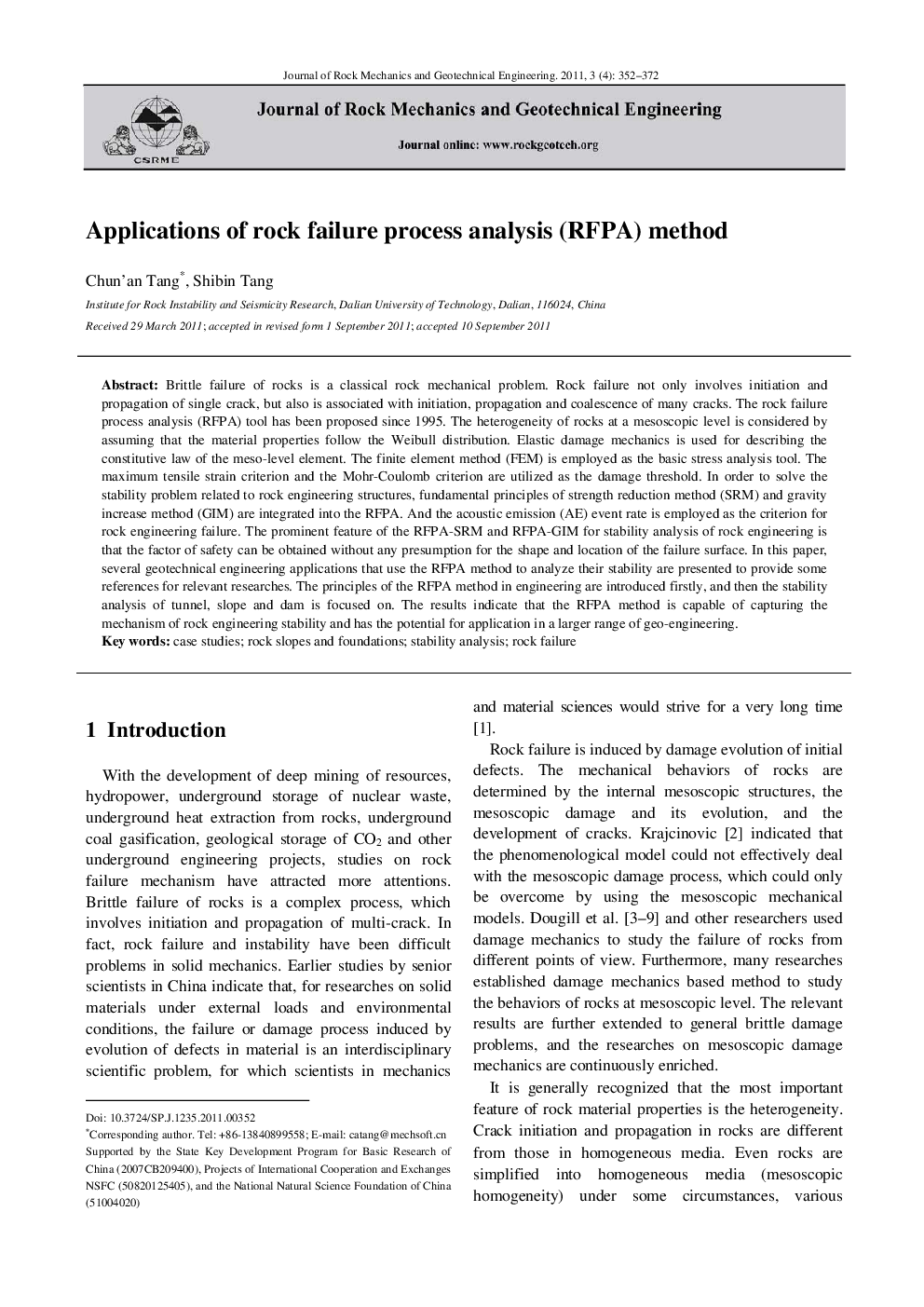| Article ID | Journal | Published Year | Pages | File Type |
|---|---|---|---|---|
| 286765 | Journal of Rock Mechanics and Geotechnical Engineering | 2011 | 21 Pages |
Brittle failure of rocks is a classical rock mechanical problem. Rock failure not only involves initiation and propagation of single crack, but also is associated with initiation, propagation and coalescence of many cracks. The rock failure process analysis (RFPA) tool has been proposed since 1995. The heterogeneity of rocks at a mesoscopic level is considered by assuming that the material properties follow the Weibull distribution. Elastic damage mechanics is used for describing the constitutive law of the meso-level element. The finite element method (FEM) is employed as the basic stress analysis tool. The maximum tensile strain criterion and the Mohr-Coulomb criterion are utilized as the damage threshold. In order to solve the stability problem related to rock engineering structures, fundamental principles of strength reduction method (SRM) and gravity increase method (GIM) are integrated into the RFPA. And the acoustic emission (AE) event rate is employed as the criterion for rock engineering failure. The prominent feature of the RFPA-SRM and RFPA-GIM for stability analysis of rock engineering is that the factor of safety can be obtained without any presumption for the shape and location of the failure surface. In this paper, several geotechnical engineering applications that use the RFPA method to analyze their stability are presented to provide some references for relevant researches. The principles of the RFPA method in engineering are introduced firstly, and then the stability analysis of tunnel, slope and dam is focused on. The results indicate that the RFPA method is capable of capturing the mechanism of rock engineering stability and has the potential for application in a larger range of geo-engineering.
